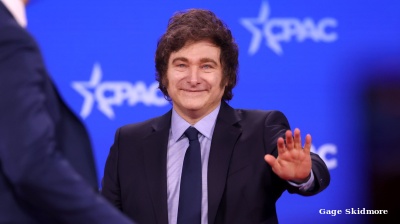Russia plans to double its missile production to 2,500 a year and can already produce 2,700 drones a month, according to Ukraine's Main Directorate of Intelligence (HUR), Ukrainska Pravda reported on September 8.
Moscow has been ramping up its missile production as the conflict in Ukraine transitions to a missile war since May when daily attacks by drones and missiles roughly tripled as Russian President Vladimir Putin attempts to turn the screws on Bankova (Ukraine’s equivalent of the Kremlin) as US sponsored ceasefire talks got underway.
Russia hit Kyiv with the largest missile barrage since the war began on September 7, hitting the Prime Minister’s office amongst other things.
Ukraine has also escalated, using its new domestically manufactured Flamingo cruise missile and long-distance drones to strike targets deep inside Russia. Last week, Ukrainian President Volodymyr Zelenskiy said that Ukraine has increased its domestic defence production and now supplies 60% of all its military means with help from its allies using the so-called Danish model, up from 40% previously.
Since August, Ukraine has hit some 50 Russian refineries, some of them repeatedly, reducing Russia’s oil product output by around 20% and causing a growing fuel crisis. Kyiv is taking advantage of Russia’s sheer size, its Achilles' heel, that makes it impossible to defend.
Russia plans to manufacture close to 2,500 high-precision missiles in 2025 as part of an expanded weapons programme that also includes significant increases in combat aircraft, tanks, and drones, Ukraine’s military intelligence service said.
Vadym Skibitskyi, deputy head of the Main Intelligence Directorate of Ukraine’s Defence Ministry, told Ukrinform that the missile output will include cruise, ballistic, and hypersonic classes. He added that the production is aimed not only at sustaining the war against Ukraine but also at preparing for a possible confrontation with Nato by 2030.
“Striking targets in Ukraine requires one combat radius, but preparing for war with Nato by 2030 requires a much greater range,” Skibitskyi said. “This is exactly what Russia is building into its weapons programmes.”
Kyrylo Budanov, Ukraine’s spy master and chief of the Main Directorate of Intelligence of the Ministry of Defence of Ukraine said in an interview over the weekend that Russia is preparing to rebuild its military with a massive $1.5 trillion investment programme to match a Nato build up. The EU has also rolled out its ReArm (video) defence plan in March that envisions €800bn of investment by 2030.
However, as bne IntelliNews reported, Europe can’t afford to take over the burden of supporting Ukraine from the US, either financially or in terms of military supplies as most EU countries are either in recession or approaching a crisis. Nevertheless, European defence spending is soaring as the so-called Zeitenwende gets underway and this year Europe will spend $170bn on modernising the military, more than the US for the first time since WWII.
Russia's planned missile production is part of a broader military build-up that will see Russia producing 57 combat aircraft, including the Su-57, Su-35, Su-34, and Su-30 models by the end of 2025. In addition, Skibitskyi said the Kremlin plans to manufacture nearly 250 T-90M tanks, 1,100 BTR-3 and BTR-82A armoured personnel carriers, and 365 artillery systems.
After struggling to produce enough arms to replace those lost on the battlefield in the first year of the war, Putin has put the entire economy on a war footing and after three years of heavy investment that capacity is now working at full steam.
Russia is also significantly scaling up its drone production. This includes the Geran — an adaptation of the Iranian-designed Shahed drone — along with the Garpiya and a variety of first-person view drones. Skibitskyi said development efforts are focused on improving range, accuracy, and warhead effectiveness. Initially Russia was importing drones from Iran, but it has since built new factories in its hinterland and also advanced the technology by improving on Iranian designs. Amongst other recent innovations, Russia recently introduced jet propelled Geran drones that have a longer range and can carry a larger payload.
Despite Western efforts to negotiate a halt to hostilities, Moscow has intensified its aerial attacks and launched a massive barrage against Kyiv at the weekend, the biggest since the war began, deploying a record 810 drones against Ukrainian territory and hitting the Prime Minister’s office for the first time. Ukrainian President Volodymyr Zelenskiy said on September 6 that since the beginning of the month, Russia had launched more than 1,300 strike drones, nearly 900 guided aerial bombs, and up to 50 missiles.

Ukraine’s Prime Minister Yuliia Svyrydenko posted a selfie on social media show the destruction of her office which was hit by a Russian missile during the heaviest barrage of Kyiv since the war started.
News

Iranian officials to discuss nuclear file in Cairo
Iran's Foreign Minister may visit Egypt as Tehran expands regional diplomatic engagement to strengthen partnerships and discuss international developments amid nuclear talks.

Milei suffers electoral blow as opposition sweeps Buenos Aires vote
Argentine President Javier Milei suffered a decisive electoral defeat in Buenos Aires Province, with his La Libertad Avanza party securing just 34% of the vote compared to 47% for the centre-left Fuerza Patria coalition.

At least five Israelis dead, 12 wounded in Jerusalem shooting
At least five people were killed and 12 were injured in a shooting attack at the Ramot intersection in Jerusalem by an Israeli Arab Palestinian, according to initial reports.
_1757311162.jpg)
Orban warns EU risks collapse without structural overhaul
PM Viktor Orban says Hungary faces a choice between safeguarding its sovereignty or "heading for the abyss" by deepening integration with the EU.




